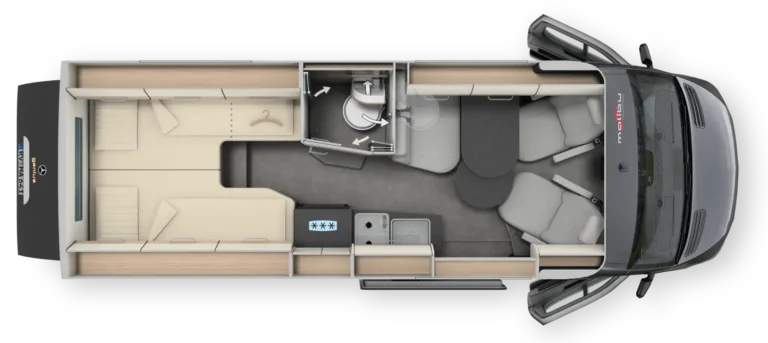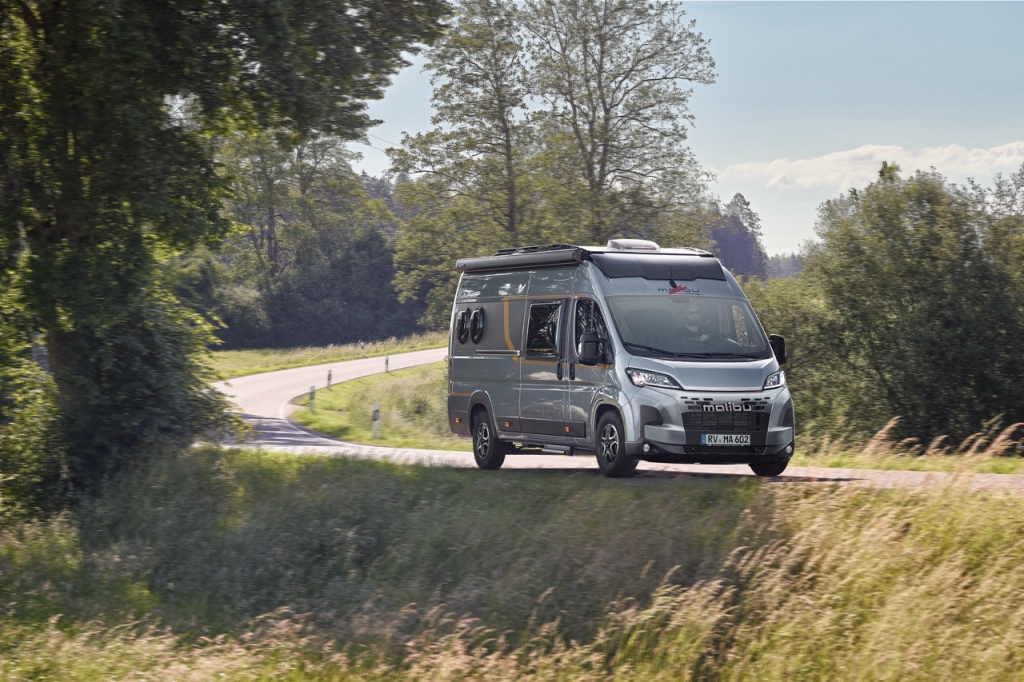Malibu genius 641 LE
Malibu genius 641 LE
from 85.270
GBP*
When short is too short and long is too long, the new Malibu Genius on a Mercedes-Benz Sprinter chassis is just right thanks to our innovative rear extension. This has allowed us to achievea compact vehicle length of 6.41 m with a unique layout design that maximises living, sleeping and driving comfort.
Dimensions
L 640.3 x B 202 x H 268.5 cm
Sitting places
4

Basic vehicleMercedes-Benz Sprinter
Standard chassis315 CDI
Base engineDiesel 2,0 l
Output (in kW/HP)110 / 150
Total length (mm)6403
Total width (mm)2020
Total height (mm)2685
Wheel base (mm)3665
Headroom in living area (mm)1900
Tech. permissible gross vehicle weight (kg)3500 / 4100(*)
Weight in running order (kg) | Legal tolerance of -/+ 5 %2.946 (2.799 - 3.093)
Max. weight of additional equipment in series production specified by the manufacturer (kg)192
Max. towed load (kg)2000
Max. numbers of seats with 3-point safety belt as standard while driving (standard)4
Rear bed dimensions (mm)2030 x 930 / 1960 x 850
Seating area bed conversion dimensions (mm)1590 x 1150**
Bed access height (mm)990
Fridge volume (l)84
Freezer compartment volume (l)6
Heating systemTruma Combi 4
Fresh water volume (l)100
Fresh water tank volume with filling in running order (l)20
Waste water volume (l)90
230V socket3
12V socket1
USB socket1
Battery capacity90 Lithium
(*) optional Mercedes 419 CDI chassis *List price incl. registration documents **in conjunction with special equipment

Find a Malibu dealer near you:
Your new camper van or motorhome are waiting for you. You just need to find out where! Find our Malibu dealers near you.

Finden Sie Ihren Malibu Händler in Ihrer Nähe:
Ihr neuer Camper Van oder Ihr neues Wohnmobil wartet schon auf Sie. Sie müssen nur wissen, wo genau. Hier finden Sie unsere Handelspartner ganz in Ihrer Nähe.